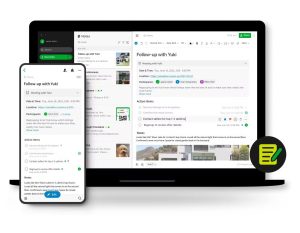Thanks to COVID-19, every conference has to either go online or go home. But are they worth going to? Here’s how to decide.
When I look at the benefits of tech conferences, two main ideas come to mind: Getting valuable training and building new and stronger relationships. By training, I mean specific ideas to actually use back at the conference. Conferences can also refresh, inspire, provide knowledge, or give you a broad introduction to a wider context. Still, when it comes to conference value, I look to the training and relationships.
SEE: Coronavirus: Critical IT policies and tools every business needs (TechRepublic Premium)
This makes me wonder if online conferences can provide those things, or perhaps, what new and different value we find in online conferences.
Consider online training
Dr. Cem Kaner, a professor of software engineering and test industry pioneer, once told me his standard for training was one actionable idea per day. As disappointing as that is, it is understandable. I’m reminded of the three-day SQL optimization course I sat in that mostly taught us to use a performance measurement tool that instrumented our code. After the course, the database administrators refused to allow us to install the tool: The programming language might be wrong, or the tool might not work in the firewall, and so on. Personally, I’ve had a little more success with shotgun-style conference training. Either a single day that covered a great deal of material in a focused area in which I was interested, or five or six one-hour sessions that are deep dives.
SEE: Zoom video conferencing: Cheat sheet (free PDF) (TechRepublic)
Online events provide a few advantages over the classic model. First, you can watch the video for familiarity, then watch it again, actually following along. For that matter, you can press pause when you get stuck or during long installs. Chris Kenst and I designed our talk on GitHub to run that way back in 2017.
You could, of course, just watch free videos online. Conferences provide other features though: They whittle down a large set of ideas to those that are the best. Conferences also ensure talks are current, and ideas are popular enough that it will be easy to get support for.
Derek Weeks is a vice president at Sonatype, which employs 300 remote developers. He is also the co-founder of All Day DevOps , a 24-hour long, five-track DevOps conference \founded in 2016. With five tracks, you can bounce out of a session as soon as you decide it isn’t a fit. At all Day DevOps, you can skip to the beginning of another session and sample all five. No more embarrassment at walking out early or frustration that all the other tracks have started and are late.
Score one for online conferences.
Meeting people and maintaining relationships
This one is more challenging in a virtual format. I have attended the Online Test Conference (OTC), the Automation Guild, the Performance Guide Conference, three or four more, and even organized the Software Testing World Cup two years in a row. Aside from the World Cup, which had an in-person final round, it was remarkably difficult to meet anyone. Most of those events had a Slack channel and a Twitter hashtag. They tried, but the connection just wasn’t there.
SEE: How to use Zoom: 15 tips and tricks (free PDF) (TechRepublic)
Derek Weeks tells me the All Day DevOps has a different strategy. It uses a Slack channel, but plans a special place for when each talk ends. By having the talks streamed like that, they “are more authentic for the audience, especially if they jump into conversation after. Like a live television show versus pre-recorded, it just has a different feel to it. You also need to give people a chance to interact. They need to have a way to interact.”
Tiffany Jachja, a developer advocate at Harness, agreed with Weeks. Harness provides Continuous Delivery as a Service and, like everyone, is moving from in-person events to online. Jachja suggested follow-up subgroups based on the sessions people attended, and driving conversations to places to create connections after the event, such as linkedIn or Twitter.
Despite all these good efforts, in my view, the clear advantage for relationships remains with in-person conferences. Yet COVID-19 had one more surprise in store for us.
Meetup in the middle
Originally designed for local gatherings, Meetup.com just hit profitability in February 2020. Then, due to COVID-19, people were not allowed to meet in person, and the $15 per month organizing fee was a hard sell.
But then there was Zoom, Webex, RingCentral, and Google Hangouts.
For me, driving to a meetup used to mean one or two hours of driving and child care concerns. Plus, I had other social events, friends, and family to schedule around. Again, thanks to the coronavirus, my social calendar is a lot more free. While I can meet people in my own city (and actually have coffee with them when this thing is over), video meetings make it possible to attend any meetup, anywhere in the world. Thursday night, I attended Software Testing KC, based in Kansas City, where I watched a presentation on the use of Docker for QA and met Olga Vovk, a software tester and organizer for the group. Thanks to LinkedIn, I can connect with people. The magic of East-to-West-Coast time makes most of the West Coast happen after bedtime. For West Coasters, that means an evening meeting might just be a lunch break.
Score one more for remote collaboration.
The Grand Rapids Cloud Meetup will be April 30 at 10 a.m. Eastern. If you miss it, you could go to Red Hat’s 2020 Online Summit on April 28-29, or watch the videos.
See you there?
Also see

Image: vladwel, Getty Images/iStockphoto
Source of Article




